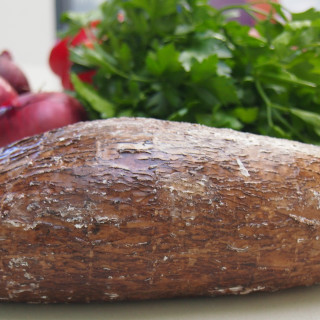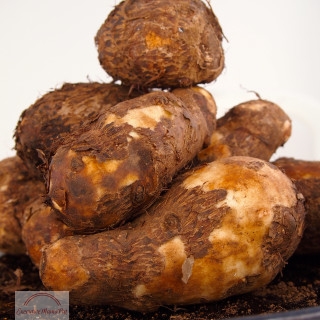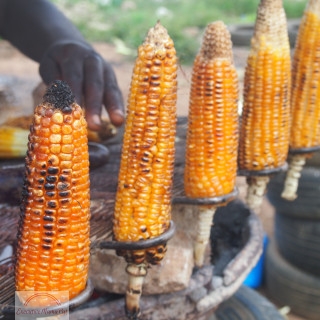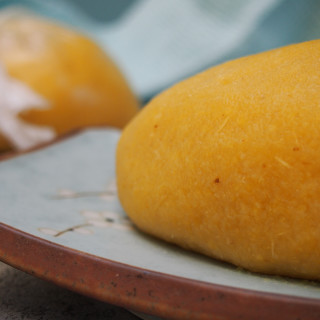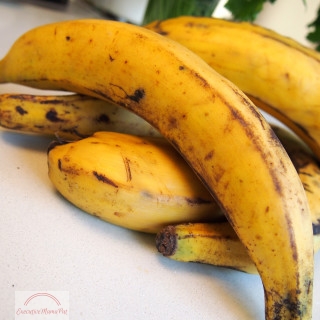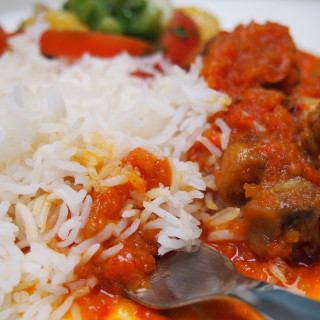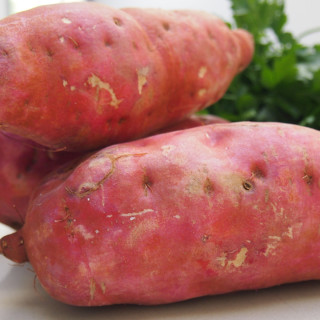Known as ege (Yoruba), akpu (Igbo), rogo (Hausa), it is a cheap source of carbohydrates, but low in other nutrients and as such it tends to be eaten with protein and vitamin-rich foods. Many varieties (so-called ‘bitter cassava’) contain cyanide and must therefore be properly prepared before consumption. The most popular form of processing in Nigeria is fermentation which produces garri, a fine grain similar to polenta. Other varieties (‘sweet’) are prepared by peeling and boiling.
Cocoyam
Nigeria is the world’s leading producer of cocoyam. Cultivars of two species are generally grown for food: Colocasia esculenta (taro, ede) which can be fried, boiled, roasted, grated and steamed or pounded; and Xanthosoma sagittifolium (tannia, ede ofe) is used in thickening soups. Nutritionally superior to cassava and yam, the corms are rich in carbohydrates;…
Corn
Corn (Maize, Zea mays subsp. mays L). Widely grown in Nigeria, both commercially and domestically, there are principally two varieties: white maize and yellow maize. The former tends to processed into flour or a stiff paste and used in making porridges such as akamu (ogi) or ‘swallows’ such as tuwo masara, nni oka and eko….
Dodo
Fried Plantain (Dodo). Use ripe or over-ripe plantains, the latter produces sweeter dodo. Allow half a plantain to a whole one per person. Wash and remove the skin, and cut into the desired shapes and thickness. Generally, rounds and small cubes are used for garnishes and side dishes; and lengthwise or diagonally for a light…
Eba
Garri tends to be bought already processed – the taste (slightly sour), colour (white or yellow) and texture (fine to coarse) will vary from place to place. Cooked garri is referred to as eba, although some people also call it garri. To Make Eba Allow about 100g of garri/200ml boiling water per person. Pour…
Garri
Garri is processed cassava which results in grains not dissimilar to polenta. It varies in colour – white or yellow (palm oil is used for yellow garri); taste and texture according to where it is processed. The different types are suitable for various purposes: cooked to eat with soups (eba); reconstituted with cold water to eat…
Plantain
From the same family as bananas, plantains (Musa sapientum var. Paradisiaca) are their starchier larger cousins, However, they need to be cooked beforehand before eating: fried, boiled, mashed or roasted. They may be eaten green or ripe. Store at room temperature.
Rice
A friend once said to me: “rice to a Nigerian is the same as potatoes to an Englishman”. A cliché, perhaps, but Nigerians DO love rice, being the highest importer of rice in Africa and eating an estimated five million tonnes annually! Many eat it at least once a day in various forms, the most…
Sweet Potato
The flesh of sweet potatoes (Ipomea batatas) ranges in colour from white through to orange and red – outside of Nigeria, the orange-fleshed ones are most readily available. However, it is possible to find the white-fleshed variety in ethnic shops. I prefer the latter as they are not as sweet and are firmer. They are…
Yam
Native to Africa, yam (Dioscorea spp.), the king of crops, is probably the most widely eaten staple in Nigeria. Amongst the Igbos, the ‘New Yam Festival’ is held annually in various towns and villages to celebrate the harvest of the new yam. There many varieties of yam in Nigeria – white yam, yellow yam, water…
